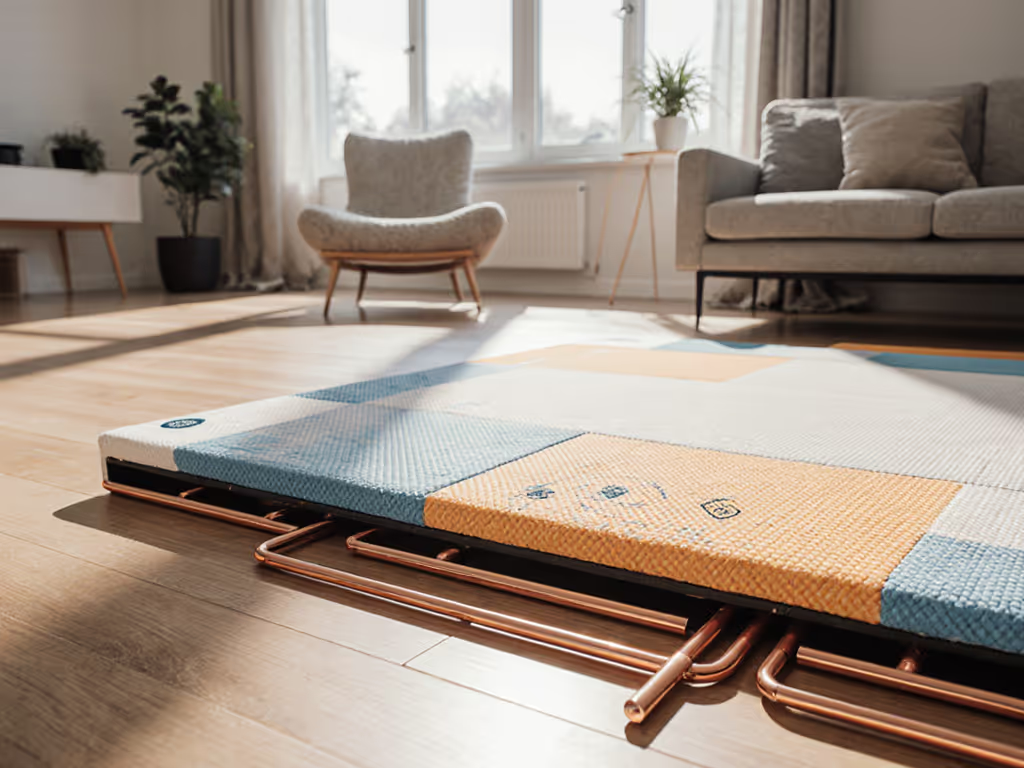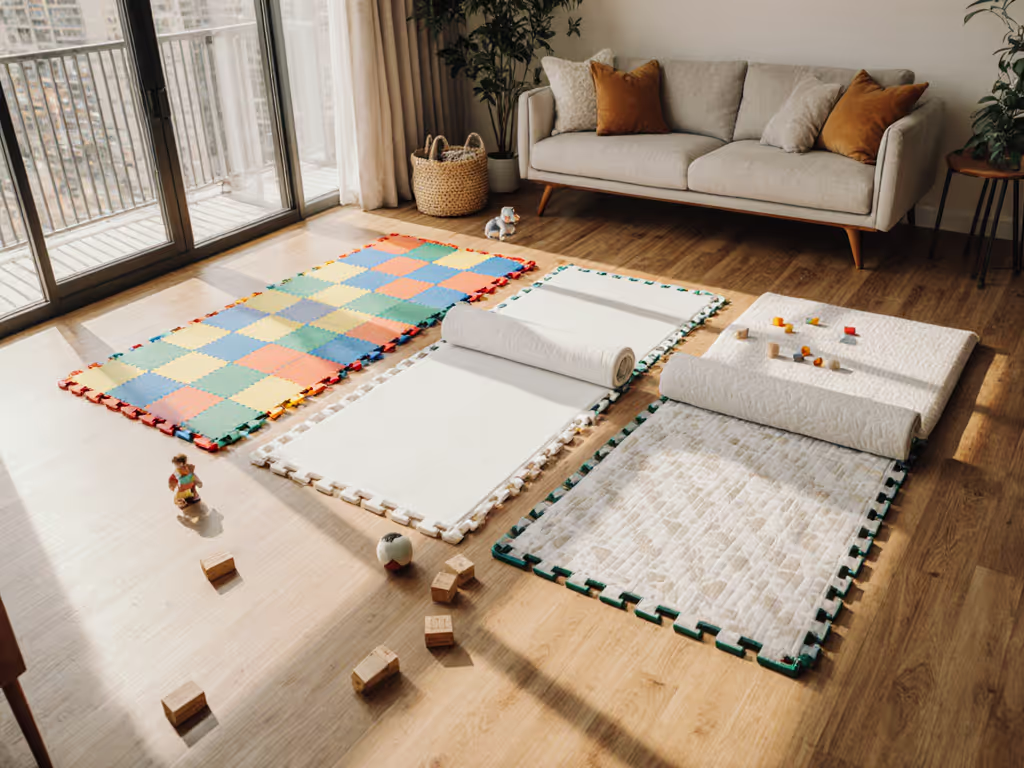
Safe Play Mat Surfaces: Hardwood & Carpet Compatibility
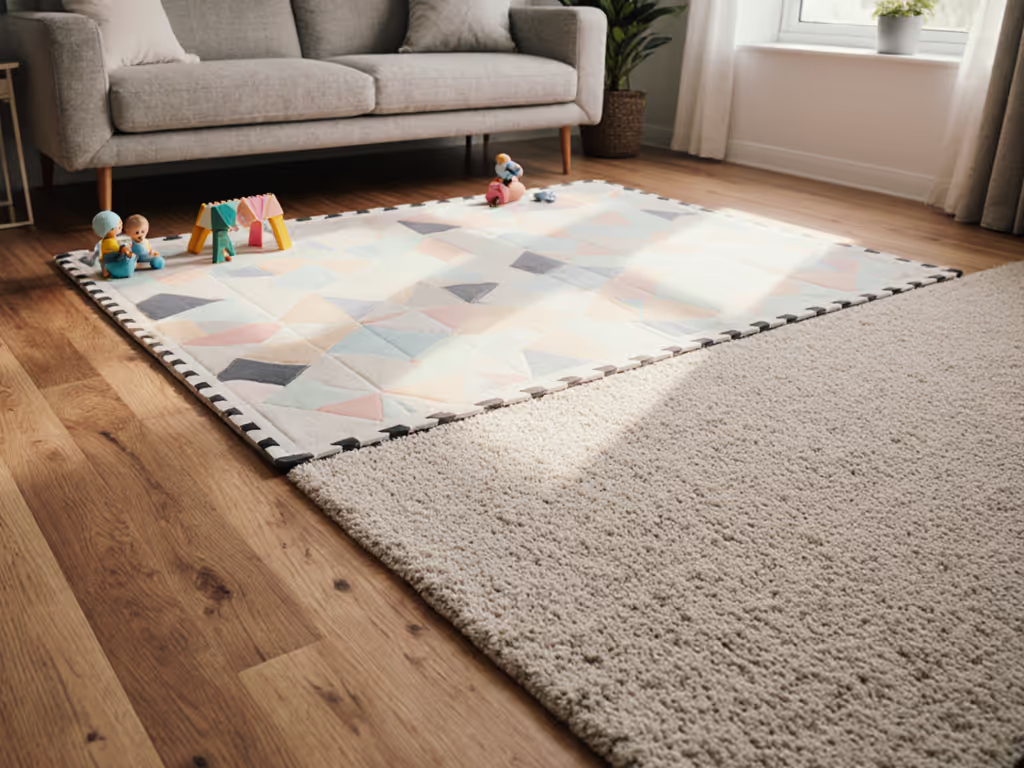
As parents redecorate nurseries and living spaces for baby's arrival, understanding play mat floor compatibility becomes essential. Selecting safe play mat surfaces that work for your specific flooring type isn't just about aesthetics (it is about safety, stability, and ensuring your investment lasts through multiple developmental stages). I've examined hundreds of material test reports to help you navigate this critical decision without the marketing fluff.
What's the core difference between hardwood and carpet when choosing play mats?
Hardwood (and other hard surfaces like laminate or tile) requires different considerations than carpet (primarily regarding slippage and surface protection). On hardwood, the greatest concern is mats sliding during active play, which can cause baby to lose balance when pulling up. Carpet presents different challenges: low-pile carpet typically provides better grip, while high-pile varieties can cause mats to "float" and create uneven surfaces that might affect motor development.
Risk-tier framing: Slipping mats on hardwood rank as high-risk (potential falls), while uneven surfaces on thick carpet rate as moderate risk (potential balance issues during standing practice).
My hardwood floors are slippery. How can I prevent play mats from moving?
Several approaches exist, but their effectiveness varies by material:
- Non-slip backing: Look for mats specifically mentioning "non-slip" properties. However, be wary of vague claims ("non-slip" isn't standardized). Show the test report, and request documentation of ASTM F1637 (standard practice for walkway safety).
- Material density: Higher-density foams (like premium EVA) naturally resist sliding better than softer alternatives.
- Weight distribution: One-piece mats generally stay put better than puzzle tiles, though some interlocking systems with heavier border pieces work well.
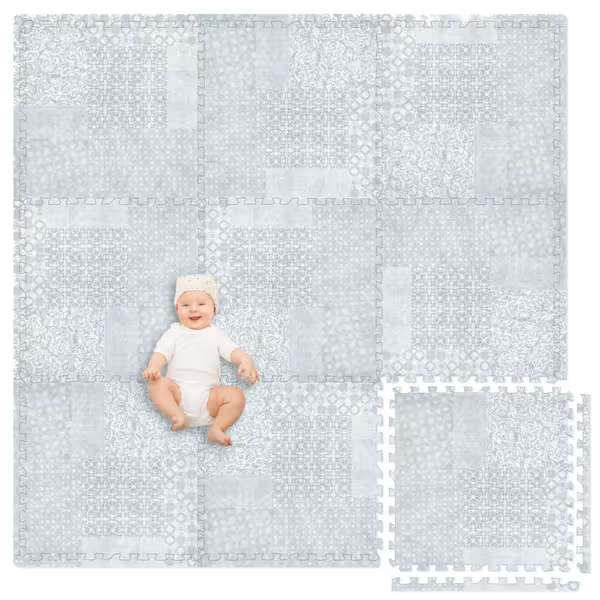
Play Platoon Large Baby Play Mat
Important distinction: Some "non-slip" mats use adhesive properties that can leave residue on hardwood. Always verify with the manufacturer whether their non-slip technology is residue-free on finished wood floors. Comfort Design Mats' one-piece approach eliminates seam concerns entirely (a benefit for hardwood compatibility).
What materials should I prioritize for hardwood floor compatibility?
Not all "foam" is created equal:
- EVA (ethylene-vinyl acetate): Most common play mat material. Higher density EVA (greater than 120kg/m³) offers better stability on hardwood. Lower density versions can become slippery when wiped clean.
- TPE (thermoplastic elastomer): Increasingly popular alternative that typically offers better natural grip than EVA.
- Natural rubber: Excellent grip but often emits stronger natural odors during off-gassing (usually 1-2 weeks).
Unknown: Exact density specifications rarely appear in consumer marketing, and manufacturers often omit these technical details. Request material data sheets when possible. For a deeper comparison of EVA, TPE, and natural rubber, see our baby play mat materials safety guide.
Transparency is a feature, not a vibe or hint.
Do play mats damage radiant-heated hardwood floors?
This depends on both the mat material and heating system specifications:
- Heat transmission: Most foam play mats act as insulators, potentially reducing radiant heat efficiency by 15-30% according to HVAC industry tests.
- Material stability: Some foams (particularly lower-quality EVA) may warp or develop odors when subjected to consistent heat above 85°F.
- Manufacturer guidance: Check if the mat specifically states compatibility with radiant heat. Most don't address this directly in marketing materials.
Action step: Contact both your flooring manufacturer and mat supplier with your specific radiant system's maximum surface temperature. Ideally, mats should tolerate at least 95°F continuous exposure without degradation.
How does carpet pile height affect play mat safety?
| Carpet Type | Play Mat Concerns | Recommended Solutions |
|---|---|---|
| Low-pile (berber, commercial) | Generally good grip | Standard thickness mats (1/2" or less) work well |
| Medium-pile (most residential) | May create slight unevenness | 3/8"-5/8" thickness provides stability |
| High-pile (shag, luxury) | Significant instability risk | Avoid interlocking tiles; choose one-piece mats with minimal thickness variation |
One client reported her baby developed an awkward crawling pattern on medium-pile carpet with puzzle mats (the uneven surface caused inconsistent resistance). Switching to a one-piece mat with consistent thickness resolved the issue within days.
What's the ideal thickness for play mat floor compatibility?
Thickness involves trade-offs between floor type and developmental needs:
- Hardwood floors: 1/2" (12mm) provides adequate cushioning without compromising stability
- Carpet: 3/8" (9mm) often sufficient as carpet provides additional cushioning
- Developmental considerations: Physical therapists recommend firm-enough surfaces that don't compress excessively during tummy time (excessive "sink")
Risk-tier framing: Overly thick mats (>3/4") on hardwood risk instability during pulling-up phase (high risk), while insufficient thickness (<1/4") fails to protect developing joints (moderate risk).
How can I verify manufacturer safety claims regarding floor compatibility?
Don't rely solely on marketing language. Take these verification steps:
- Request specific test data for non-slip performance on your floor type
- Check for third-party certifications that include slip-resistance testing (ASTM F1637, DIN 51130)
- Examine warranty terms (reputable companies offer warranties against deformation from normal use)
- Look for return policies that accommodate floor compatibility issues (not just defects)
Most critically: Show the test report. I've found manufacturers willing to provide floor compatibility testing documentation typically have more reliable products. During my own nursery search, this simple request eliminated half our options before we even unboxed anything.
What flooring-specific red flags should I watch for?
Be alert to these often-overlooked compatibility issues:
- Discoloration risk: Certain foams can temporarily discolor light hardwood (particularly UV-sensitive finishes)
- Edge tripping hazards: Common with puzzle mats on uneven surfaces, more problematic on carpet transitions
- Moisture trapping: Between mat and floor, especially problematic with radiant heating
- Cleaning incompatibility: Steam cleaners may damage some foam types when used on hardwood
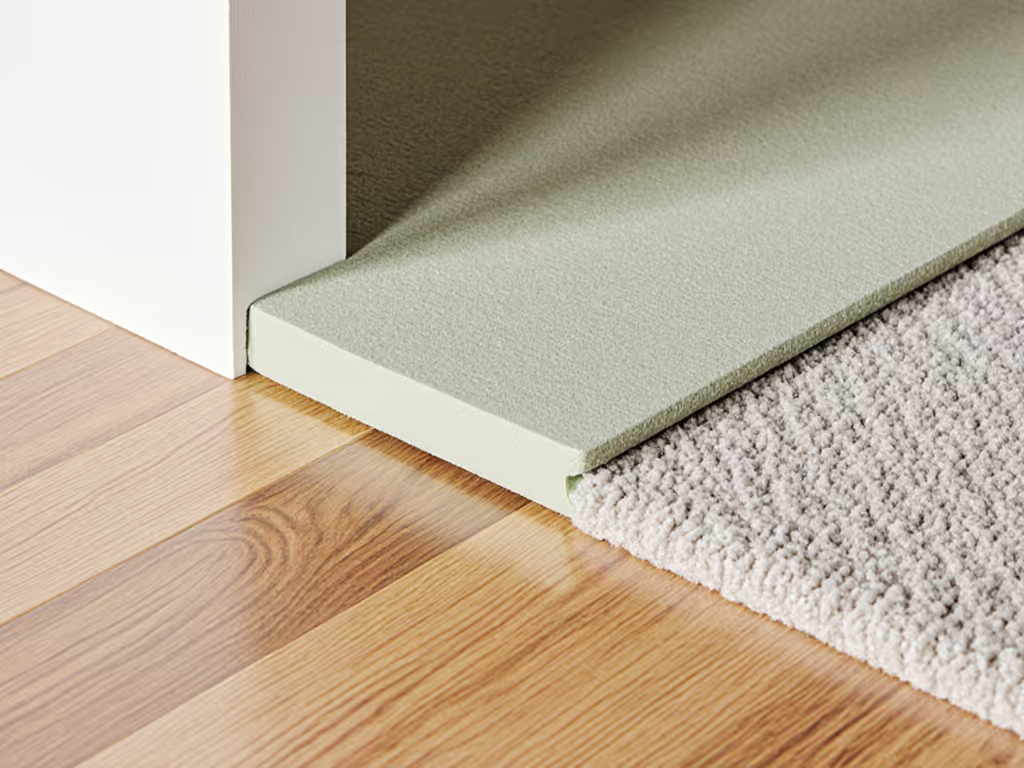
Final Considerations for Long-Term Floor Compatibility
When evaluating play mats for hardwood floors or non-slip play mat carpet options, consider how flooring interactions evolve as baby grows:
- Newborn stage: Softness and cushioning take priority
- Pulling-up phase: Stability becomes critical (slipping mats become hazard)
- Toddler stage: Durability against furniture movement matters
The best soft floor mat solutions accommodate all stages without replacement. Look for brands that explicitly address these developmental transitions in their testing documentation rather than focusing solely on "baby" use cases.
Further exploration: Before purchasing, request floor compatibility documentation specific to your home's flooring. Take photos of your space and ask manufacturers how their product would perform in your specific environment (reputable brands will provide tailored guidance rather than generic assurances). Remember that transparency isn't just marketing, it is a measurable feature that affects both safety and longevity of your play mat investment.
Related Articles

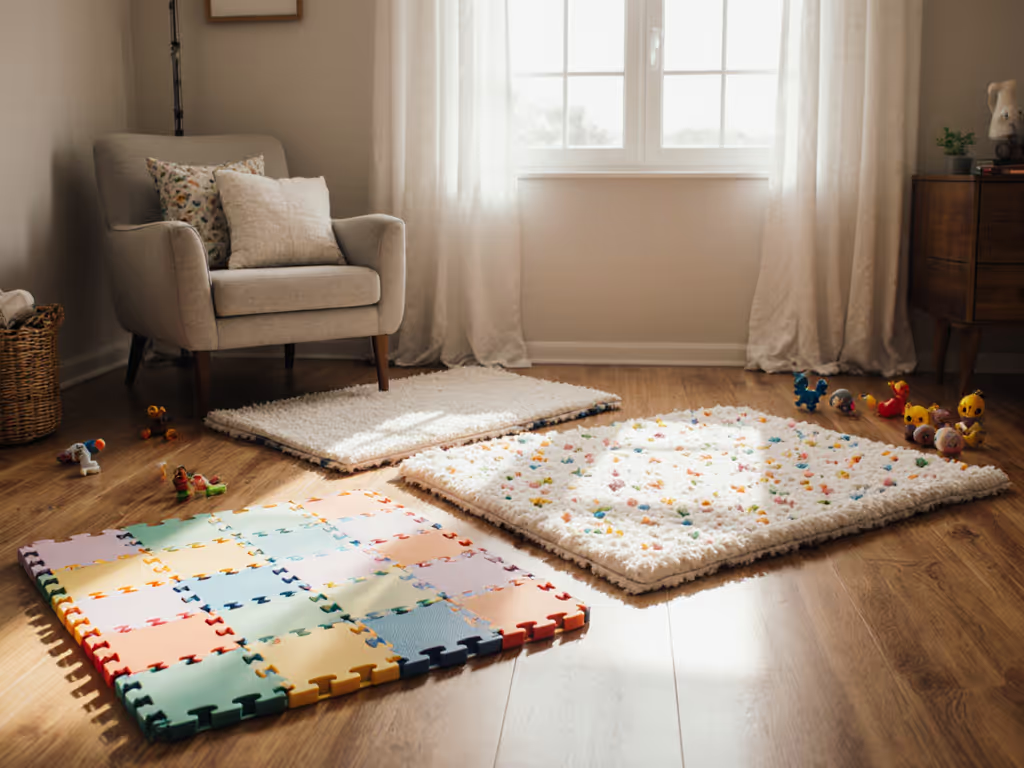
Down Syndrome Play Mats Compared: Lasting Value Guide

Postpartum Recovery Play Mat: Mom-Friendly Picks

Scrub-Tested Pet-Proof Baby Play Mats
